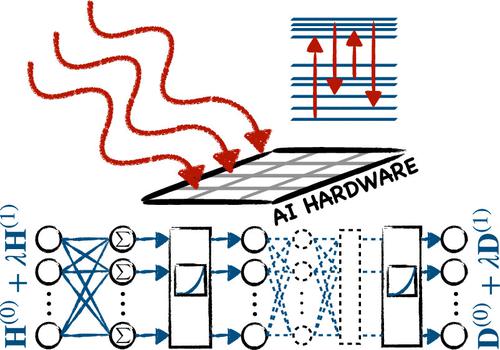当前位置:
X-MOL 学术
›
J. Chem. Theory Comput.
›
论文详情
Our official English website, www.x-mol.net, welcomes your
feedback! (Note: you will need to create a separate account there.)
Quantum Perturbation Theory Using Tensor Cores and a Deep Neural Network
Journal of Chemical Theory and Computation ( IF 5.7 ) Pub Date : 2022-06-07 , DOI: 10.1021/acs.jctc.2c00274 Joshua Finkelstein 1 , Emanuel H Rubensson 2 , Susan M Mniszewski 3 , Christian F A Negre 1 , Anders M N Niklasson 1
Journal of Chemical Theory and Computation ( IF 5.7 ) Pub Date : 2022-06-07 , DOI: 10.1021/acs.jctc.2c00274 Joshua Finkelstein 1 , Emanuel H Rubensson 2 , Susan M Mniszewski 3 , Christian F A Negre 1 , Anders M N Niklasson 1
Affiliation

|
Time-independent quantum response calculations are performed using Tensor cores. This is achieved by mapping density matrix perturbation theory onto the computational structure of a deep neural network. The main computational cost of each deep layer is dominated by tensor contractions, i.e., dense matrix–matrix multiplications, in mixed-precision arithmetics, which achieves close to peak performance. Quantum response calculations are demonstrated and analyzed using self-consistent charge density-functional tight-binding theory as well as coupled-perturbed Hartree–Fock theory. For linear response calculations, a novel parameter-free convergence criterion is presented that is well-suited for numerically noisy low-precision floating point operations and we demonstrate a peak performance of almost 200 Tflops using the Tensor cores of two Nvidia A100 GPUs.
中文翻译:

使用张量核和深度神经网络的量子微扰理论
使用张量核执行与时间无关的量子响应计算。这是通过将密度矩阵微扰理论映射到深度神经网络的计算结构上来实现的。在混合精度算术中,每个深层的主要计算成本主要由张量收缩(即密集矩阵-矩阵乘法)支配,从而达到接近峰值的性能。使用自洽电荷密度泛函紧束缚理论以及耦合扰动 Hartree-Fock 理论证明和分析了量子响应计算。对于线性响应计算,
更新日期:2022-06-07
中文翻译:

使用张量核和深度神经网络的量子微扰理论
使用张量核执行与时间无关的量子响应计算。这是通过将密度矩阵微扰理论映射到深度神经网络的计算结构上来实现的。在混合精度算术中,每个深层的主要计算成本主要由张量收缩(即密集矩阵-矩阵乘法)支配,从而达到接近峰值的性能。使用自洽电荷密度泛函紧束缚理论以及耦合扰动 Hartree-Fock 理论证明和分析了量子响应计算。对于线性响应计算,











































 京公网安备 11010802027423号
京公网安备 11010802027423号